Spies & Seduction: The Psychology of Propaganda
WWI was the first war that saw the mainstream media play a significant role in reporting news from the frontline - and the first war that saw governments and military intelligence methodically produce propaganda posters to stir patriotism.

Lord Kitchener by Alfred Leete, 1914
It is the finger that launched 1,000 copycat posters. British War Minister Lord Kitchener appeared on the cover of London Opinion on Sept. 5, 1914, as a potent symbol of the Army and Empire. Leete’s image was a clever recruiting tool at a time when Britain’s Army relied on professional soldiers and volunteers. Lord Kitchener’s provocative hand singles you out, placing you under an obligation to respond. Cleverly, Lord Kitchener doesn’t demand that you enlist; he lets you come to your own conclusion.
"The brand new social experience where you activate your gaming skills as you train like a spy."
- TimeOut
Take on thrilling, high-energy espionage challenges across different game zones.


I Want YOU for US Army by James Montgomery Flagg, 1917
Inspired by Kitchener, Flagg’s WWI poster also became personal - Uncle Sam needed help and it was up to the family to rally behind him. Flagg created 46 more illustrations before his death but ‘I Want YOU’ is his most memorable and likely the most infamous war poster in the world.
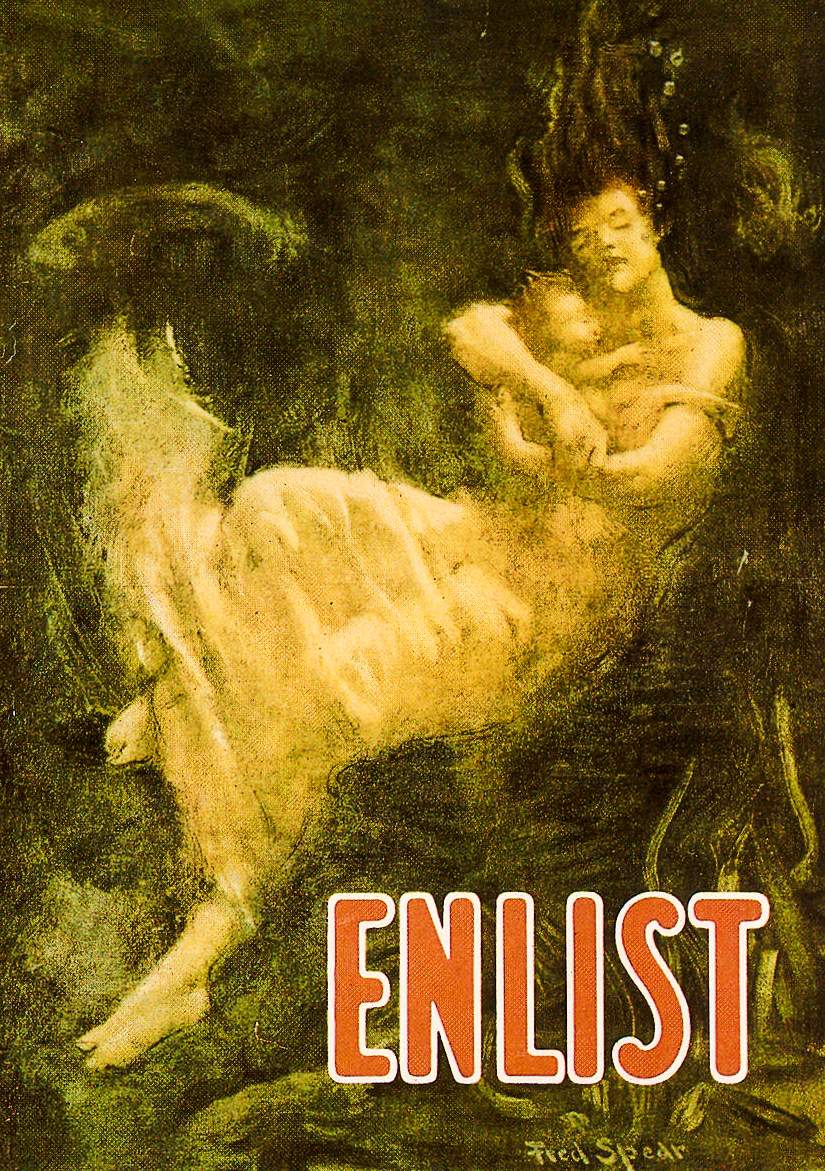
Enlist by Fred Spear, 1915
Enlist was commissioned in 1915, the year a German U-boat torpedoed the British luxury steamship RMS Lusitania, killing more than 1,000 people including 128 Americans. It was a pivotal moment in WWI and set off a chain of events that led to the US entering the war. The poster was meant to shock Americans out of their complacency. A woman, clutching a baby, is drowning as she sinks to the bottom of the ocean with a powerful call to arms: ENLIST.
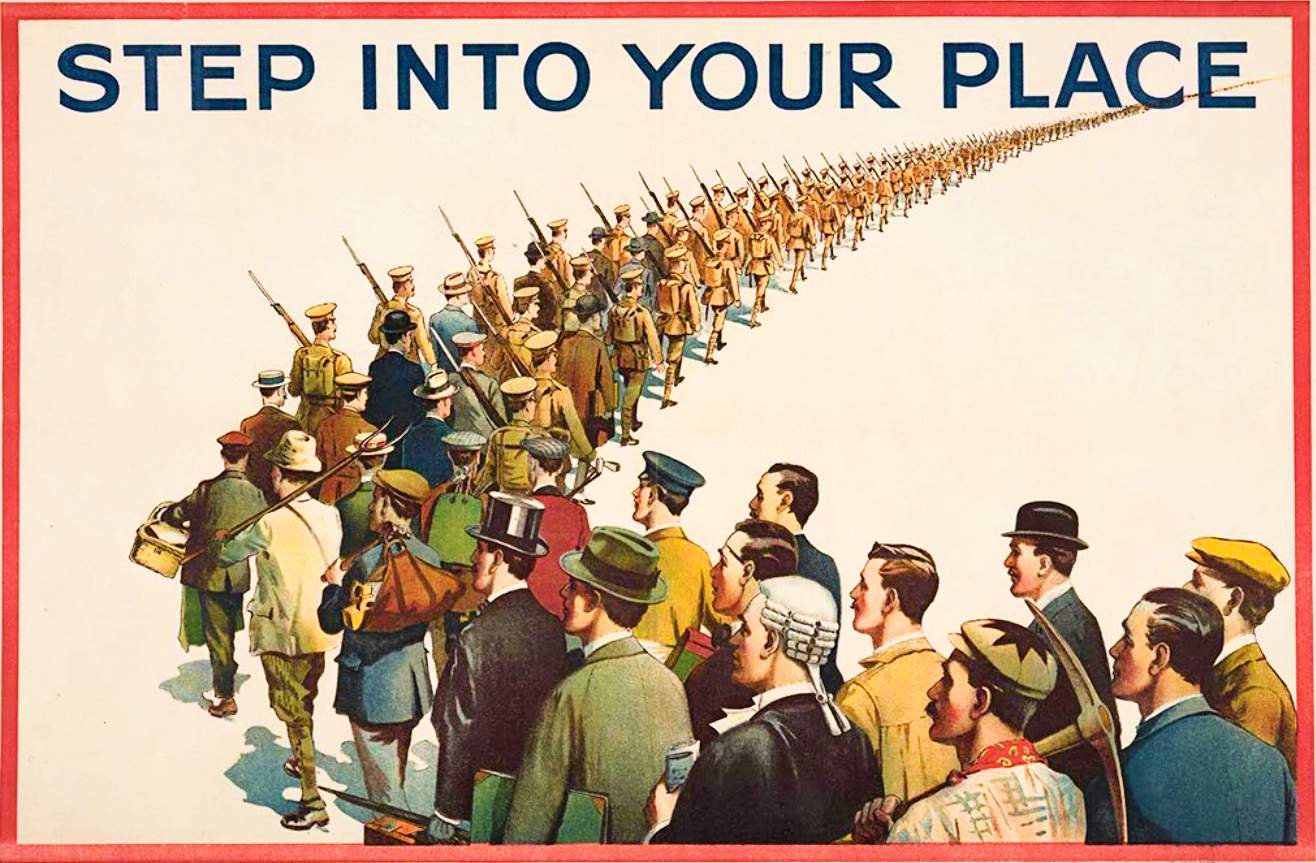
Step Into Your Place, Artist Unknown, 1915
The artist used a sense of community and patriotism to convince Britain to sign on to the war effort. This column of civilian men - each holding the implements of their trade or profession - march together until they become one united force, transformed into British infantrymen.
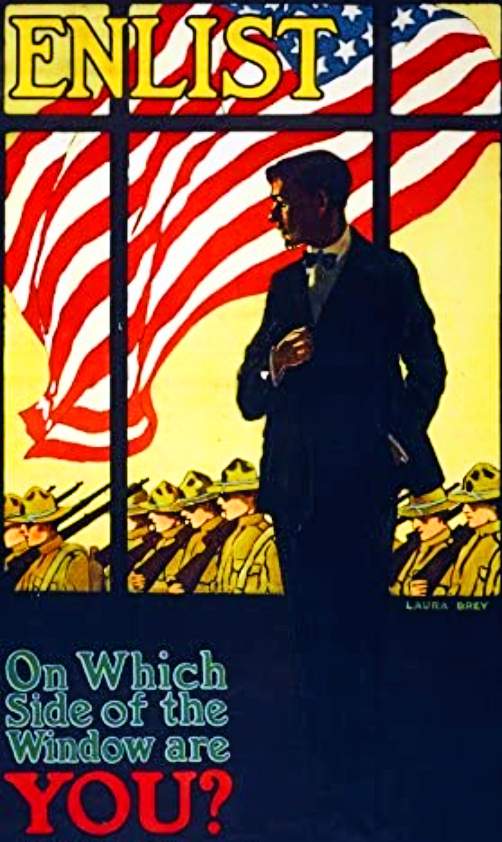
Enlist: On Which Side of the Window are YOU? by Laura Bray, 1917
An American stands in the dark shadows. Outside, in the vivid light, his countrymen defend the homeland as the poster inquires: “On Which Side of the Window are YOU?” The window, a metaphor for the barrier between those who put their lives at risk and those who hide in the dark, makes the message very clear.
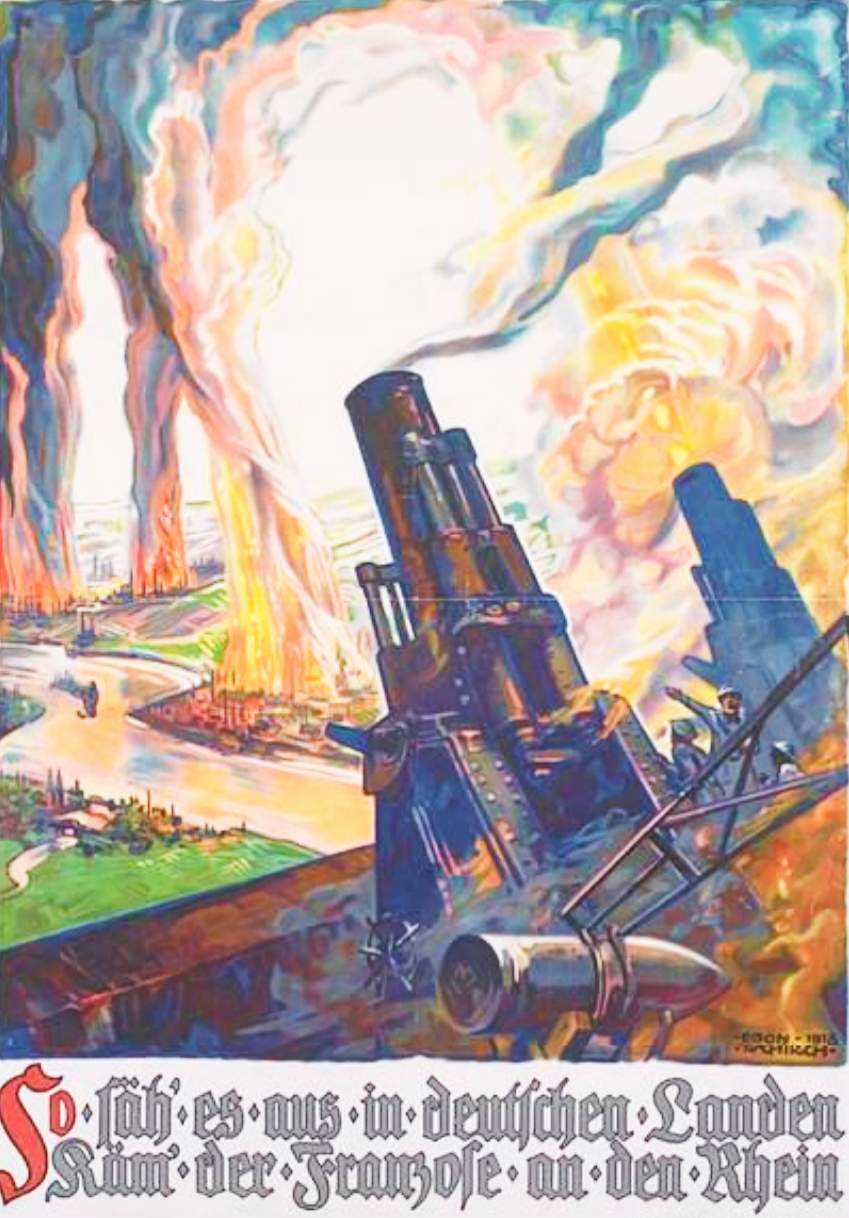
This is How it Would Look in German Lands by Egon Tschirch, 1918
Germany sometimes relied on fear to deliver its message: This is what losing looks like. Two French howitzers fire on a German city, attacking the banks of the Rhine River, while smoke rises from the industrial areas.
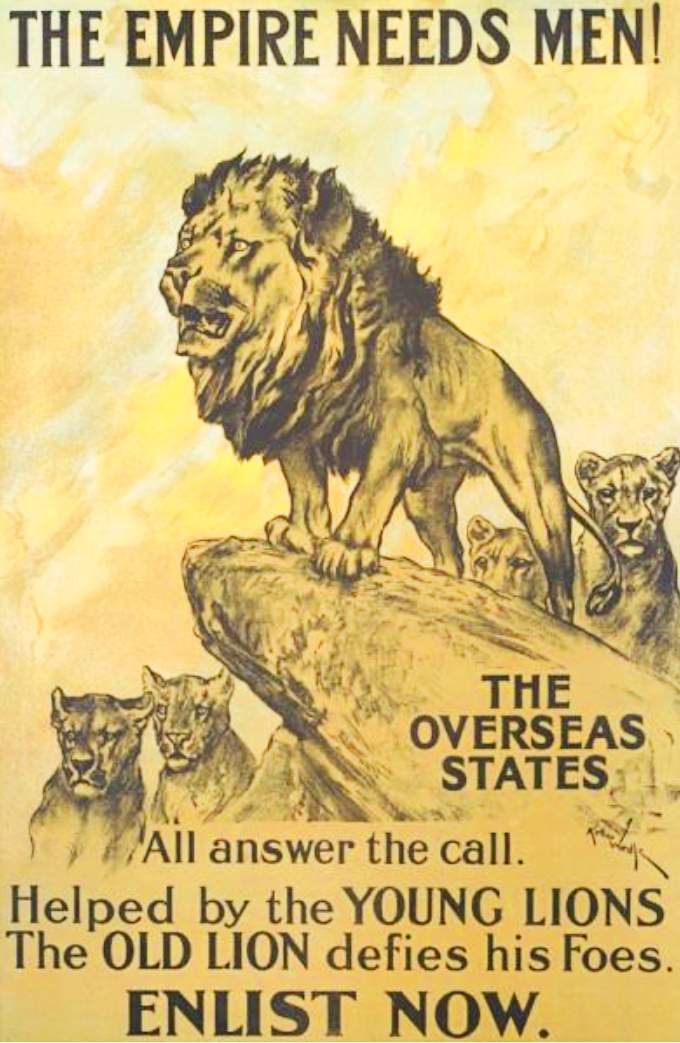
The Empire Needs Men by Arthur Wardle, 1915
The British and American propaganda departments both used animal imagery to tap raw emotion. In Wardle’s The Empire Needs Men, Britain is represented by an older lion while four young lions symbolize the Commonwealth and British Empire. The poster is directed at the overseas states, imploring them to answer the call to defend the Empire.

YOU buy a Liberty Bond, Lest I Perish by Charles R. Macaulay, 1917
Guilt is a powerful motivator. If you can’t fight, this poster implies, at least you can get behind the US government by buying a liberty bond. Macaulay would later win the Pulitzer Prize.
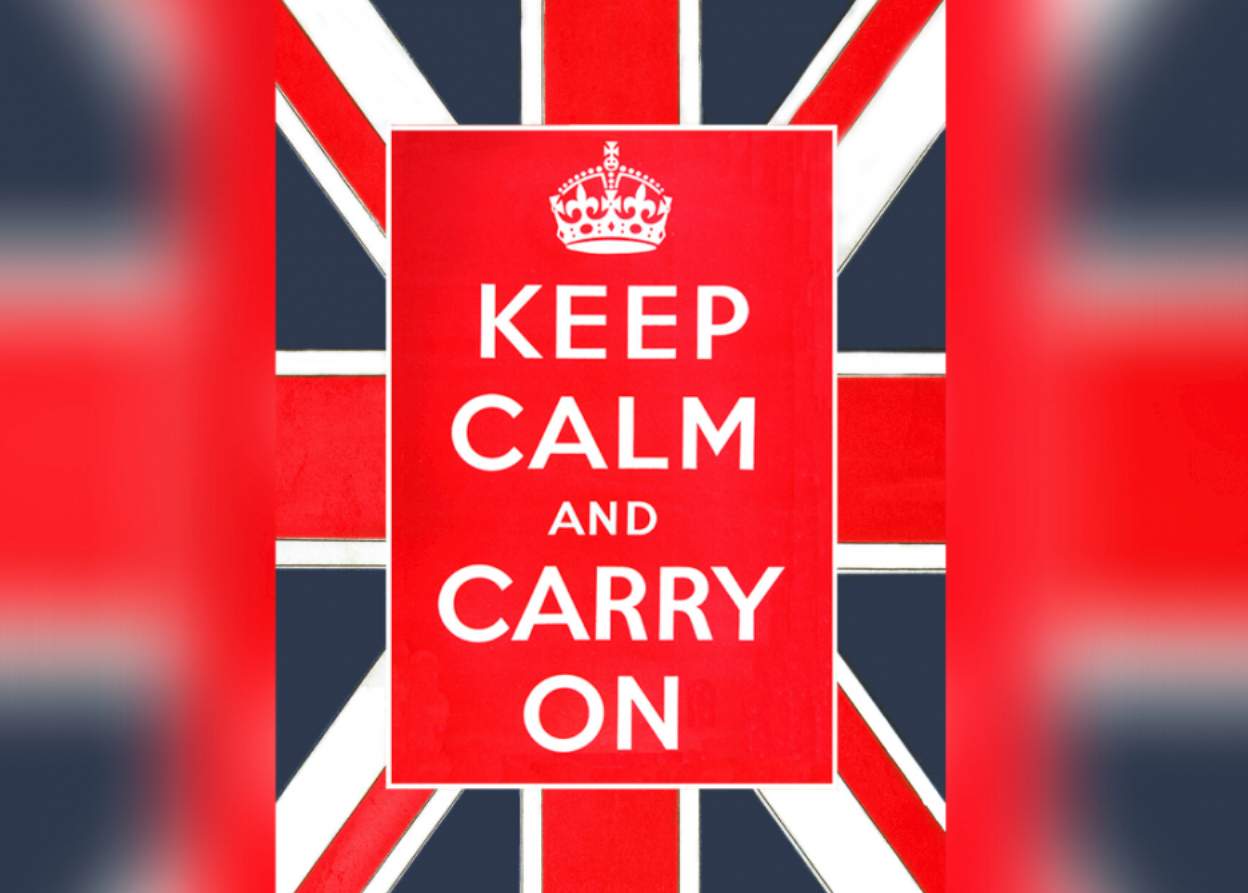
Keep Calm and Carry On, UK Ministry of Defense, 1939
Keep Calm and Carry On was to be released in the event of a German invasion as a cautionary note of sober restraint. There was no need, however, so the poster remained under wraps for decades. Today, the reassuring words are the basis of political and humorous memes.
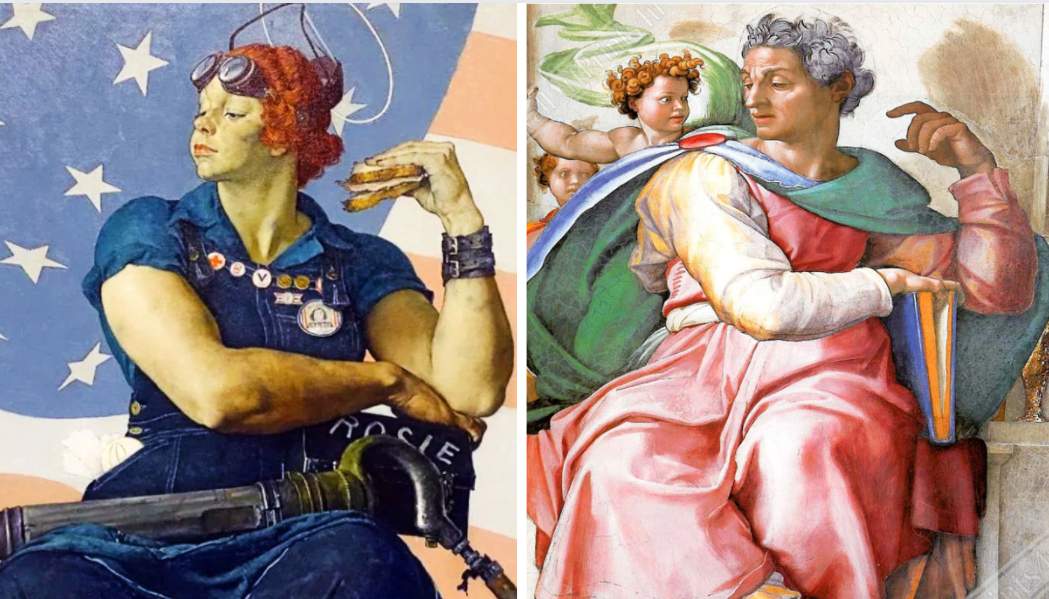
Rosie the Riveter, Norman Rockwell, 1943
The US entry into WWII in 1941 created labor shortages so women were encouraged to join the American defense industry. Rosie the Riveter (left) was the ideal female munitions worker - an empowered woman who could keep the home fires burning while doing her patriotic duty. Artist Norman Rockwell painted Rosie as a higher being, ensuring Rosie’s pose reflected Michelangelo’s painting of the prophet Isaiah from the Sistine Chapel.
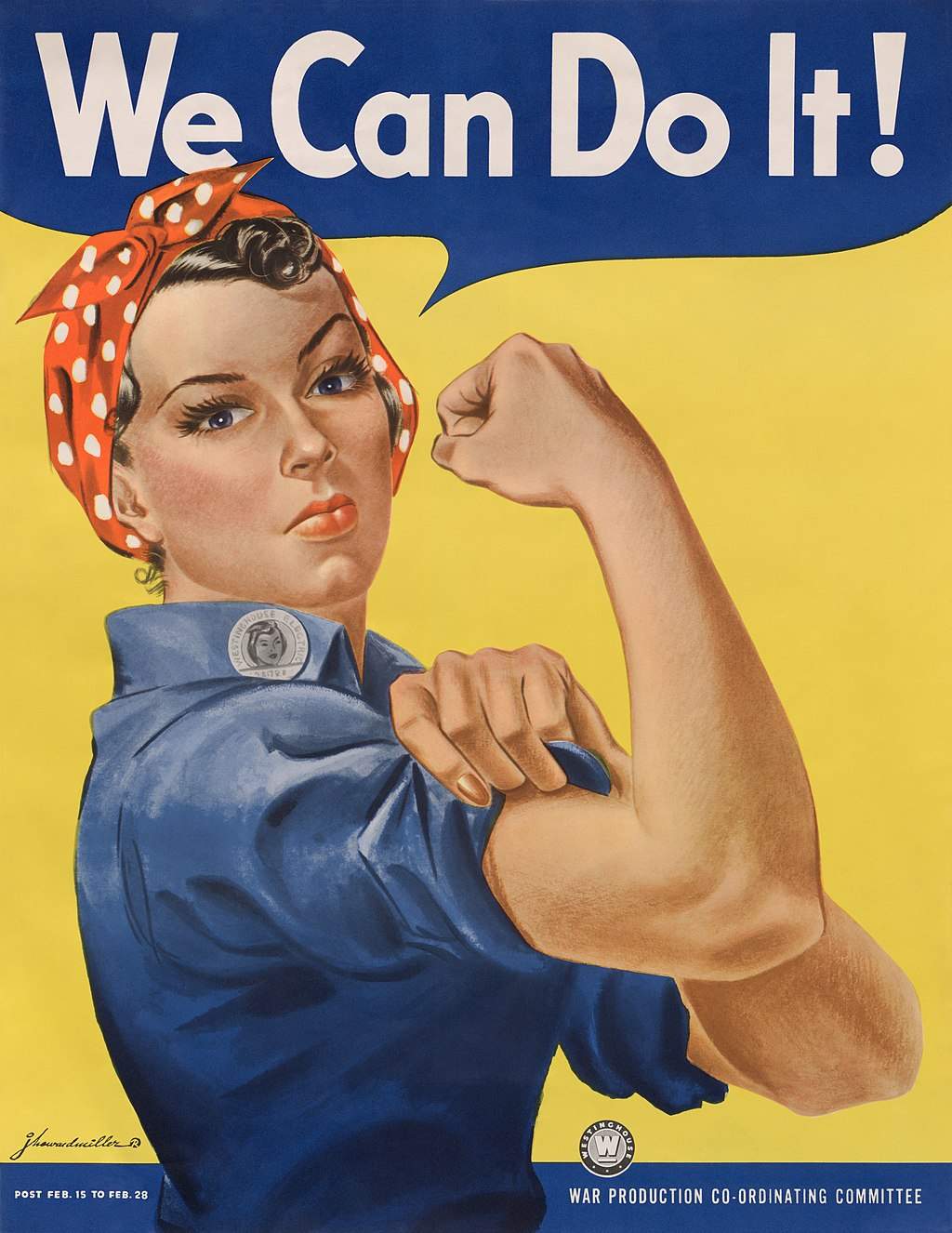
We Can Do It by J. Howard Miller, 1943
Produced for Westinghouse Electric to boost morale among female staff, Miller’s powerful We Can Do It poster is so inspiring it was reproduced to promote feminism in the 1980s, turned into a US first-class mail stamp in 1999, and reworked again in 2010 to celebrate Australia’s first female PM.

Come Into The Factories by Philip Zec, 1941
While American women flexed their muscles, British ladies rejoiced at the thought of heading to the factory while a fleet of military aircraft swarmed overhead. The poster hints at solidarity with the Soviet women who were WWII Allies. Only the British Ministry of Information could conjure up such a joyous welcome for women on the assembly line.

Pearl Harbor, various artists
Japan’s bombing of Pearl Harbor created an outpouring of propaganda. Japan’s Air Force poster (left) glorified military might while America raised its fist with the slogan: Our Bullets Will Do It.
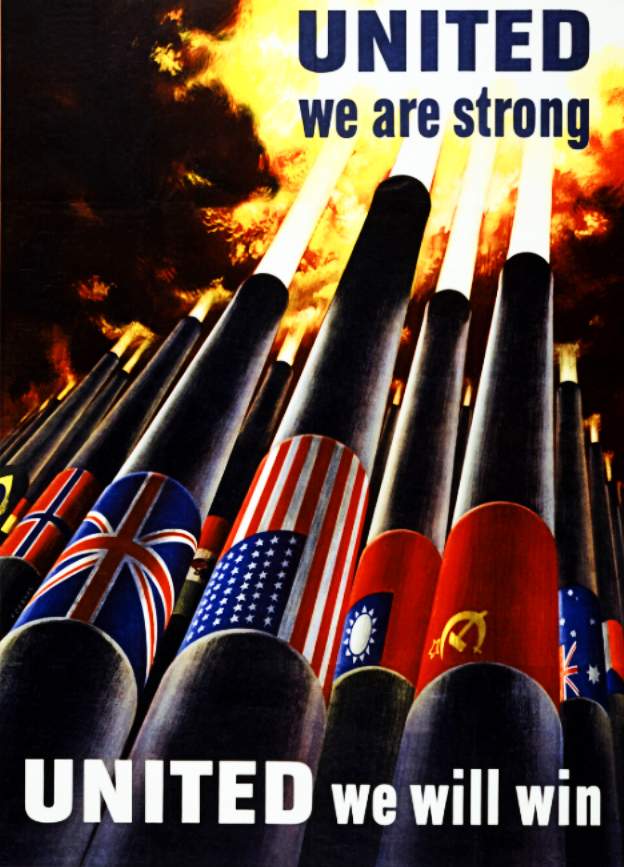
United We Are Strong, Henry Koerner for the US Office of War Information, 1943
With artillery gun barrels draped in flags - all firing in unison - Koerner’s poster was intended to show racial solidarity among wartime workers. The theme of a united alliance for victory was common in WWII posters. As with Koerner's Save Waste Fats for Explosives, the exploding energy draws attention to the message.
By the 1950s, the CIA’s Psychological Warfare Workshop was run by E. Howard Hunt who had a wide remit: propaganda, economic warfare, sabotage, and subversion. Hunt had his eye on bigger propaganda tools than posters. He’d send his propaganda messages through blockbuster Hollywood movies like Animal Farm.
SPYSCAPE+

Join now to get True Spies episodes early and ad-free every week, plus subscriber-only Debriefs and Q&As to bring you closer to your favorite spies and stories from the show. You’ll also get our exclusive series The Razumov Files and The Great James Bond Car Robbery!


Gadgets & Gifts
Explore a world of secrets together. Navigate through interactive exhibits and missions to discover your spy roles.
Your Spy Skills
We all have valuable spy skills - your mission is to discover yours. See if you have what it takes to be a secret agent, with our authentic spy skills evaluation* developed by a former Head of Training at British Intelligence. It's FREE so share & compare with friends now!
* Find more information about the scientific methods behind the evaluation here.


Stay Connected
Follow us for the latest
TIKTOK
INSTAGRAM
X
FACEBOOK
YOUTUBE